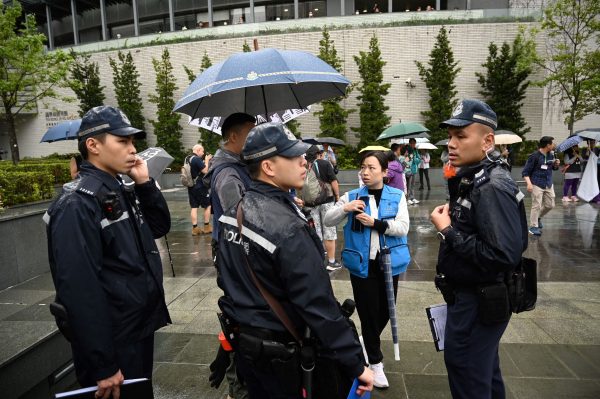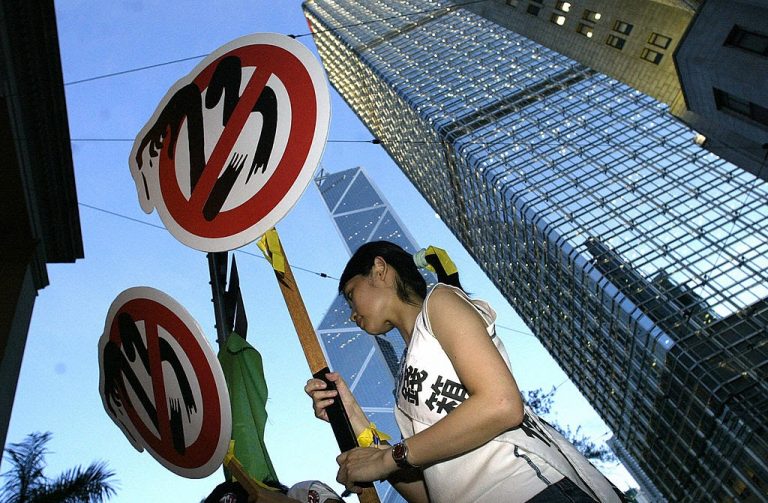Recent rules introduced by the Hong Kong authorities retain the right of residents to protest and public assembly, but they must wear identifying markers — such as colored lanyards or special T-shirts — in order to do so.
The regulations, in effect since March 26, are controversial because Hongkongers fear they could be used by the authorities to keep track of and harass those who take part in demonstrations.
That Sunday saw a protest against a planned land reclamation project, and was the first legally sanctioned public demonstration in years.
Since late June 2020, Communist China imposed a far-reaching National Security Law on Hong Kong, the iconic port city that is part of China but kept a high degree of political freedoms after its return from British colonial rule under the “one country, two systems” arrangement.
- Fleeing National Security Law, More Than 20,000 Hongkongers Resettle in Taiwan
- Apple Daily Raided by Hong Kong Police; Several Arrested Under ‘National Security Law’
- China Launches 3-Year Plan to Expand Xinjiang-style ‘One Police Station for Every Village’ Program to Rest of Country
Thousands of dissidents and ordinary protesters have been arrested since the NSL’s passage; the law allows for a maximum punishment of up to life imprisonment for acts that “threaten national security.”

Success
You are now signed up for our newsletter
Success
Check your email to complete sign up
Preceding the law’s imposition from Beijing, Hong Kong saw a massive pro-democracy movement beginning in spring 2019; at several points, more than 1 million of the city’s residents turned out to protest the Chinese Communist Party’s steady erosion of their civil rights.
Chris Tang, Hong Kong Security Secretary, defended the protest identification rules as being no different from those required at expos or other large-scale events.
“Police took measures based on risk assessments to identify participants, control the number of people within a safe limit and prevent anyone from hijacking the events that could endanger social security,” he said of the March 26 protest, as quoted by the South China Morning Post for an April 2 article.
He further said that “some people still hope to stir up trouble and endanger public safety,” repeating the CCP’s stance on the 2019-2020 democracy movement.













